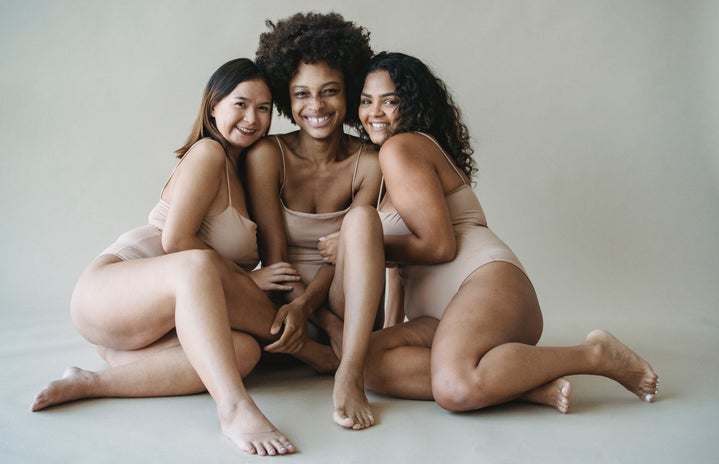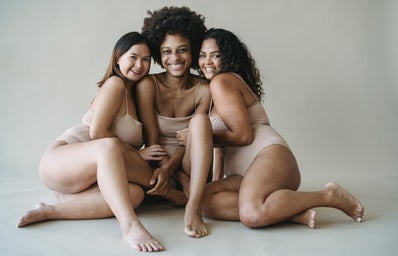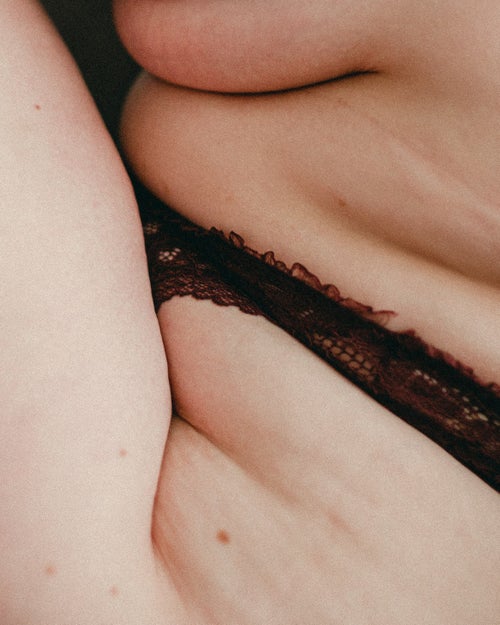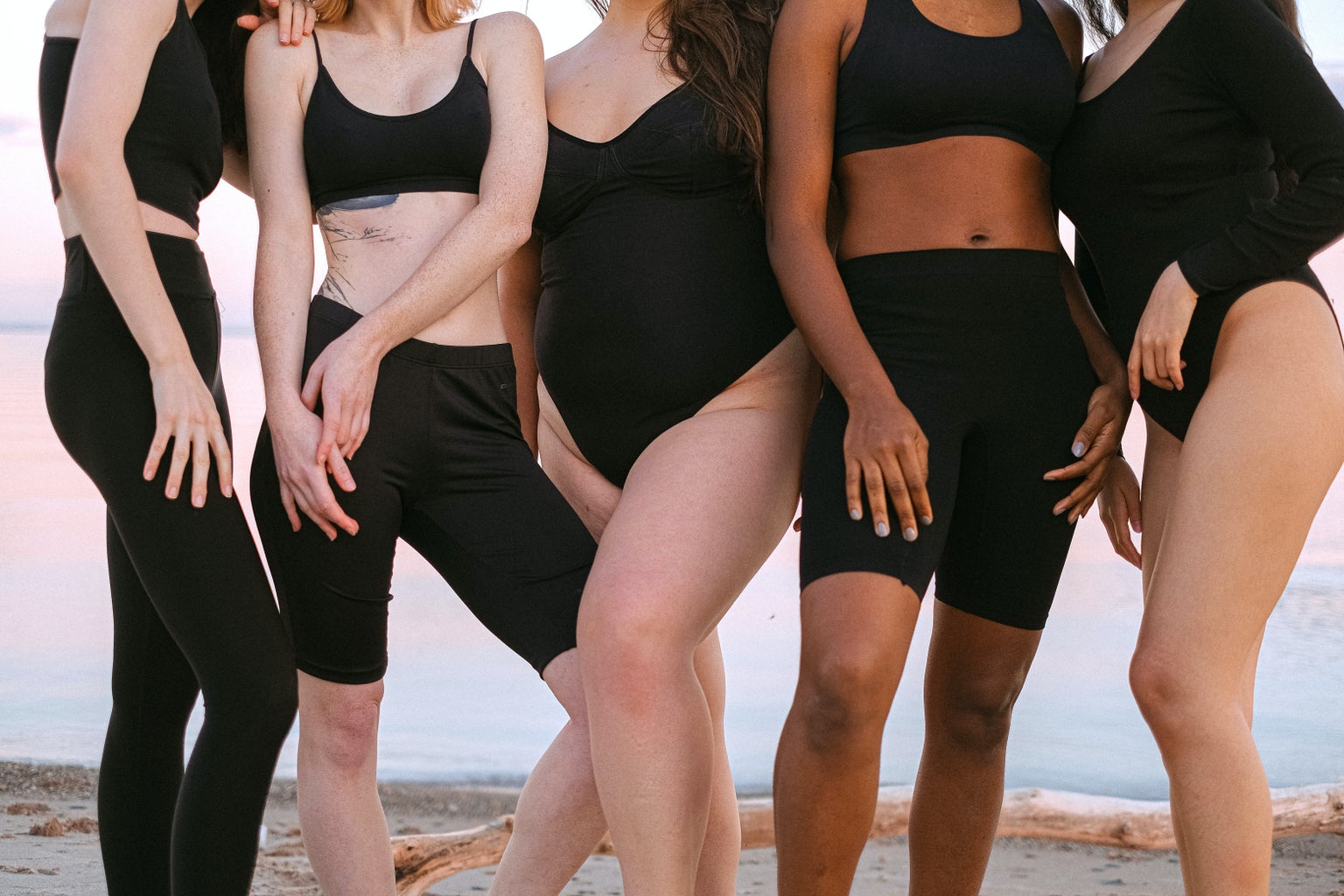Look down at your body –
Whisper –
There is no home like you.
Rupi Kaur
Ever since I was young, I struggled with my body, whether it was my legs being too big, my hips too wide or my stomach too fat. From the jiggle on my arms to the extra skin on my chin – my body was my biggest insecurity. In the fourth grade, all I wore to school were sweatpants and hoodies to hide my body – I was only 10. No matter how many “love yourself” quotes exist, learning to love your body is not as easy as it seems, especially growing up in the Tumblr thigh-gap era and magazines promoting weight loss in 10 days for a slimmer, toned look. It was only in 2013 when the internet was obsessed with the thigh-gap trend. I was 12 when I began convincing myself that I needed to have a gap between my thighs and fit this unattainable expectation for women. Eating disorders were common for many of the young girls in my school, and the plus-size me was praised for losing weight from starving myself.
When you are fat and lose weight, you are seen as an “inspiration” even though no one knows how the weight diminished from your figure. One morning, I fainted and was rushed to the hospital where fluids were pumped into me. My mother was beside me; she had tears in her eyes and felt like she failed as a mom. Despite not eating, the body mass index was telling me that I was overweight and obese for my height and age, but everyone told me this baby fat would disappear eventually, that I would grow into it.
Then, I started high school. I saw my guidance counsellor once a week, and in grade eight, she told me high school would be the best years of my life––they weren’t. In fact, they were hell. I was the typical high school loner. I dressed in all black and listened to pop-punk music. I didn’t eat breakfast or lunch and barely ate dinner. I would walk down the halls and feel as though everyone was looking at me – at my body – and thinking the same things I thought about myself; how fat I was, how ugly I was and why I didn’t dress like the other girls. They all shopped at Brandy Melville at the local mall and I couldn’t fit into anything.
It wasn’t until I was 18 when I was sitting in my guidance counsellor’s office telling her I couldn’t wait for high school to be over so I could finally be myself and find people like me. I had plans of going off to university in the city and finding friends who had similar experiences or interests and identified the same ways in which I did. I have been seeing the same counsellor since I was in the sixth grade, and for the first time, I told her I was glad I was still alive.
I was 20 when I started getting slightly more comfortable in my skin. It was the most intimate thing I could feel. Getting out of high school and going into university to see women of all shapes and sizes embracing their bodies and wearing what they wanted was refreshing and something I wanted. This body of mine is an ecosystem and I am its creator. After a battle of self-image and self-worth that I have been fighting for so long, I finally said to my body: “I want to be your friend.” My body took a deep breath and replied, “I have been waiting my whole life for this.”
Being plus-size means being the butt of the joke – even in ways no one notices. We are the ‘fat friend’; we are told “you’re not fat, you’re beautiful!” As if you cannot be beautiful and fat at the same time. People avoid naming my body, not because it is an inherently bad body, but because of their assumptions of what it means to be fat. To them, being fat is to be ugly, rejected and unloved. It means forever being trapped in a “before” weight loss picture and never reaching the “after”. They are trying to spare my feelings from the judgements they have already made about bodies like mine.
My relationship with my body was always based on the perceptions other people had of it. It was not until the revelation of social media influencers and the rise of plus-size and mid-size women that I began to realize the power and beauty of my body––from its stretch marks, cellulite and fat. The love I have for Lizzo is unreal because of how confident she feels in her body, and influencers like Javiera have changed my perspective on my self image.
Although times are changing and our society is shifting to a more open space––one where bodies with thicker thighs and jiggle are becoming more accepted––the fashion industry still seems stuck in its ways of excluding plus-size women. When I walk into Brandy Melville or Aritzia, I feel all eyes on me and assume they are all thinking the same things: “Does she really think she is going to fit into these clothes? We only carry up to a size eight.” Even stores such as H&M are not congruent with their sizing; in one pair of jeans, I may fit into a 10––and the others a 12, 14 or 16. At first, it made me feel like it was my fault for having a little too much fat on me, but it’s the brands who did not add enough fabric.
Recently on TikTok, a plus-size influencer named Alicia Mccarvell broke the news that American Eagle––a company that prides itself on being size-inclusive––recently pulled their plus-size clothing options from in-store to online only. Alicia Mccarvell and a previous worker at American Eagle stated that American Eagle loves to preach body positivity and promote all their sizes, but forces plus-size people to purchase their clothing online. This is not right.
Other brands that do not cater to their plus-size demographic include H&M, Urban Outfitters and Zara. It was only last year where Aritzia began offering extended sizing, but still, most of their clothing only goes up to an XL. An XL should not be considered plus-size, and there are a variety of sizes that are being excluded from brands that boost body positivity and inclusivity.
The fashion industry has excluded bigger women, and brands are still adding onto this by disregarding plus-size people from the same in-store shopping experience. If stores like American Eagle are only offering plus-size options online and not in-store or not catering to the plus-size demographic, brands are leaving out such a large group of people although there is a demand for plus-size fashion. For women above a size 12, we cannot just pop into a department store like Zara and buy off the rack; we are forced to hunt down pieces online, spend extra money for shopping and carefully look at the measurements of clothing in order to find things we can buy with ease, praying it fits.
Interestingly enough, stores such as Topshop and Free People will design “oversized items” for their shoppers but continue to offer no options above a size 14 because “it’s too expensive to add plus-sizes because of the amount of fabric it takes.” Gabi Fresh from Instagram tweeted a picture of an oversized blazer Topshop was selling and said, “If you can make a size 22 blazer for a size 6 girl to wear, you can make a size 22 blazer for a size 22 girl.” This underlines a trend in fashion that whatever a thin person wears can become trendy, but not for a plus-size woman. There is a noticeable difference in the selection of clothing offered to plus-size versus thin women. Plus-size clothing is often limited in terms of trending styles – but plus-size people want to be trendy, too. The clothing available to plus-size people often includes hideous prints and unflattering cuts. I am told to avoid crop tops and wide-legged pants because they make me look fat. I am fat, but I deserve to have trendy clothing that flatters my body.
Whether it is the Aritizia Melina pants, the House of Sunny’s Good Vibrations Dress or the Jean Alexa dress – it is much easier to be fashionable when you are thin. Los Angeles-based creator Callie Richards said, “When I see a viral fashion trend on TikTok, there’s a good chance I cannot participate because my size isn’t included.” The fashion industry needs to be revolutionized, much like what Rihanna did with the beauty industry and the release of Fenty Beauty. Plus-size women represent 68 percent of shoppers, yet a majority of decisions are still being made with straight-sizes in mind.
If I could go back in time, I would tell my younger self that, finally when I look into the mirror, I see a beautiful, young woman instead of the negativity I used to fuel myself and my own body with. I am a masterpiece and a work in progress – I deserve a life without hating my body.




